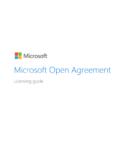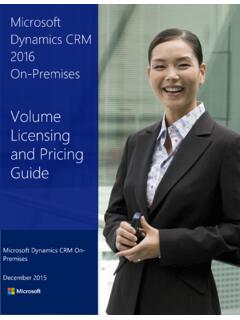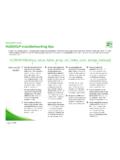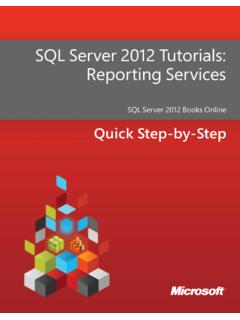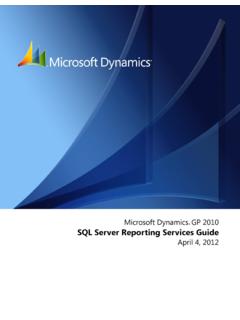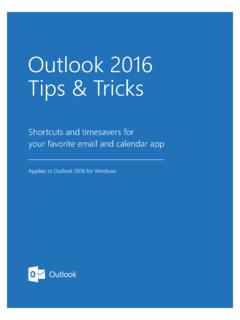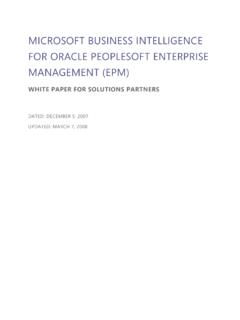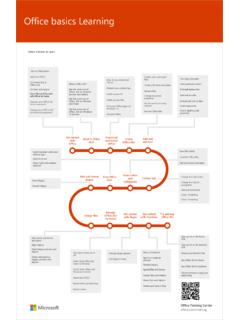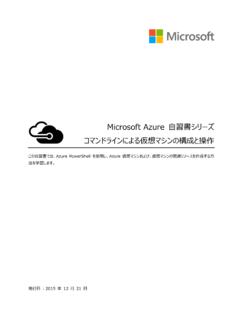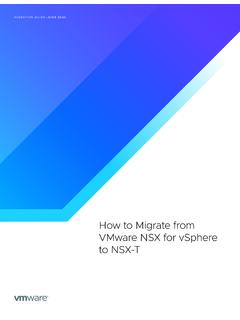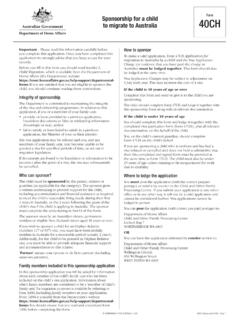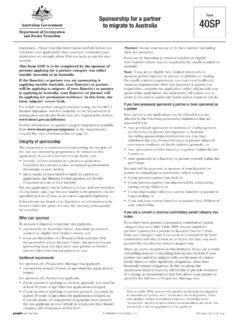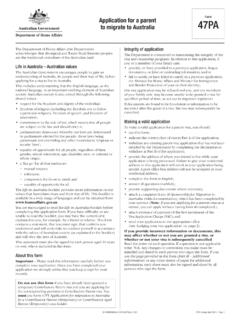Transcription of Architecture approaches for Microsoft cloud tenant-to ...
1 May 2021 2021 Microsoft Corporation. All rights reserved. To send feedback about this documentation, please write to us at sold a business unit and brand identityThis series of topics illustrates several Architecture approaches for mergers, acquisitions, divestitures, and other scenarios that might lead you to migrate to a new cloud tenant. These topics provide starting-point guidance for scenarioArchitecture approachAlmost everything is migrated in a single event. Higher risk, shorter single-event migrations larger than 15,000 users or 7 TB of site volumes, network bandwidth, and helpdesk capacity can be limiting factors to scale. Consider using an alternate temporary domain for a phased migration if you are unable to accommodate a single approaches for Microsoft 365 tenant-to -tenant migrations This topic is 1 of 5 Architecture approaches for Microsoft 365 tenant-to -tenant migrations This topic is 1 of 5 Contoso users will continue to be known as migration without rebrandingArchitecture scenarioIdentities will migrate to a target tenant and will keep the existing domain as part of the migrationTenant-to-tenant migration with rebrandingIdentities will migrate to a new target tenant and will change the brand identity as part of the migration.
2 cloud tenant moveI sold a business unit and the business unit will adopt the target company s brandingContoso users will be known as need to split users across two tenantsIdentities remain in the source tenant, but all users in the affected domain and all workloads are moved to a new cloud company cannot use the registered (*. ) tenant nameI m moving from a commercial tenant to Microsoft cloud for GovernmentGradual migration of users, services, and data. S ource domains are not transferred. Users assume new target domains. Lower risk, longer limitations can cause migrationChoose oneTechnical questions Do you need to retain the domain in the target environment? (How do you want to be known by the outside world in the end-state?) Are you migrating to a brand new environment (greenfield), or targeting an existing tenant? What type of continued collaboration between environments is expected in the end-state? What on-premises Active Directory Domain Services (AD DS) domains do you have and are they synchronizing with Azure Active Directory (Azure AD) tenants?
3 What workloads are being used in the source tenant? How many accounts are in scope? Is mail forwarding required after migration? Is a unified GAL required?Non-technical questions How will you reconcile policy conflicts as they arise? Which project metrics are fixed and which can be optimized (time, resources, scope, quality, user experience)? For more information, see The project triangle. What are the Day 1 requirements? Day two and beyond? How will you reconcile policy conflicts as they arise? Which project metrics are fixed and which can be optimized (time, resources, scope, quality, user experience)? For more information, see The project triangle. What are the Day 1 requirements? Day two and beyond?Because both tenants and services are live at the same time, a user s migration can be thought of as a migration event. The activities may vary, but include the to the migration e vent: Send communication to each user.
4 Put mailboxes and content into read-only the migration event: Stop reverse forwarding mail to allow new email to be delivered to the target tenant Enable target accounts, if required. Complete the final data event: Users must recreate their mobile profiles. Client software needs to be reconfigured (Outlook, OneDrive Sync Client, Microsoft 365 apps activation).Migration eventsTenant move or splitSimilar to single-event migration, except this does not include migrating accounts to a new on-premises AD DS forest. For tenant splits, this approach is not intended for long-term event includes additional work to re-establish existing identities to the new tenant. Most customers work with Microsoft Consulting Services or a Microsoft partner to migrate tenants, including using third-party tools to migrate content. In the examples provided in these topics, Contoso is the source tenant and Fabrikam is the target (destination) tenant.
5 Architecture approaches for Microsoft 365 tenant-to -tenant migrations This topic is 2 of 5 Design considerationsMigrating to an existing tenantIf the target tenant already exist, consider these additional complexities: The naming format for users might change as well as the domain to match an existing policy. How will policy conflicts be resolved? Does the target tenant have access restrictions (for example, Azure AD Conditional Access policies) that may prevent access for migrated identities?May 2021 2021 Microsoft Corporation. All rights reserved. To send feedback about this documentation, please write to us at can pre-stage mailboxes and SharePoint and OneDrive content before the cut-over event (final domain name move), after the cut-over event, or a combination of the two. Pre-stage vs dial-tonePre-stage contentIf the timeline permits, pre-stage content prior to the migration event. Start with the oldest content first.
6 Migration tools typically do not replicate mailbox data changes from source. For mailbox data, stop performing deltas for content under 30 days. For SharePoint and OneDrive, do incremental syncs as needed. Migration is complete after running the final delta sync, in conjunction with the final completion after cutting over to the new tenant, migrate a minimal amount of content. Continue to migrate content after the initial data migration. Requires continued access to the source. Useful if there s not enough time to pre-sync. Better network performance for the initial data migration content re-caching (as opposed to caching entire mailboxes over the network). Works best for mailbox data only. This approach leads to a poor user experience with OneDrive and SharePoint data user accounts to a new domainBoth Architecture approaches involve moving user accounts from an existing domain to a target domain. There are several approaches you can take: Use third-party tools Hire Microsoft Consulting S ervices (Active Directory Migration Service) Hire a Microsoft partnerBe sure to plan which properties to migrate with the user accounts.
7 For example, migrating the Exchange Legacy DN property allows users to reply to old user accounts to a new domainBoth Architecture approaches involve moving user accounts from an existing domain to a target domain. There are several approaches you can take: Use third-party tools Hire Microsoft Consulting S ervices (Active Directory Migration Service) Hire a Microsoft partnerBe sure to plan which properties to migrate with the user accounts. For example, migrating the Exchange Legacy DN property allows users to reply to old mailboxesServiceCan migrateNotesCurrent tenant-to -tenant workload migration capabilitiesYesMicrosoft Consulting Services (MCS) and/or third-party toolExchange public foldersSharePoint sitesOneDrive foldersOffice 365 groupsTeamsYammerStream, Flow, PowerApps, and PowerBIMicrosoft 365 Apps (Office 365 ProPlus)IntuneSee Reset Microsoft 365 apps for enterprise activation Reset Microsoft 365 apps for enterprise activation and/or third-party toolMCS and/or third-party toolMCS and/or third-party toolMCS and/or third-party toolYesPartialPartialNoYesContent migration requires a third-party tool and scripts to recreate the Teams structure and scenarios supported requires a service ticket with Microsoft Information ProtectionPartialLimited scenarios supported requires a service ticket with Microsoft Support.
8 Labels cannot be migrated across typical strategy includes: One week of mail on the initial migration. One month of mail at the next milestone. Remaining mail at the final and OneDrive migrationAligning SharePoint and OneDrive data requires careful planning. Data volumes can be quite large and, unlike mail data, the documents are frequently changing. In single event migrations, the required UPN changes during the migration will require re-mapping source to target. SharePoint and OneDrive migrationAligning SharePoint and OneDrive data requires careful planning. Data volumes can be quite large and, unlike mail data, the documents are frequently changing. In single event migrations, the required UPN changes during the migration will require re-mapping source to target. Long term tenant co-existenceIf required, ongoing collaboration may be required between tenants. See Microsoft 365 inter-tenant collaboration. If required, ongoing collaboration may be required between tenants.
9 See Microsoft 365 inter-tenant collaboration. Long term tenant co-existenceIf required, ongoing collaboration may be required between tenants. See Microsoft 365 inter-tenant collaboration. Exchange hybrid configurationBoth approaches require an Exchange management server on-premises with hybrid connectivity. This is necessary to manage properties of the mailboxes and to forward email to the new tenant, if needed, in a phased migration. Consider running the minimal hybrid configuration option in the Exchange Hybrid Configuration Wizard (HCW) if you do not require additional more information, see How and when to decommission your on-premises Exchange servers in a hybrid approaches require an Exchange management server on-premises with hybrid connectivity. This is necessary to manage properties of the mailboxes and to forward email to the new tenant, if needed, in a phased migration. Consider running the minimal hybrid configuration option in the Exchange Hybrid Configuration Wizard (HCW) if you do not require additional more information, see How and when to decommission your on-premises Exchange servers in a hybrid hybrid configurationBoth approaches require an Exchange management server on-premises with hybrid connectivity.
10 This is necessary to manage properties of the mailboxes and to forward email to the new tenant, if needed, in a phased migration. Consider running the minimal hybrid configuration option in the Exchange Hybrid Configuration Wizard (HCW) if you do not require additional more information, see How and when to decommission your on-premises Exchange servers in a hybrid 10 Subscription Activation licenseYesWindows users must join the Azure AD domain of the target tenant and sign in with their new target tenant account name. Ensure that the new user accounts have the Microsoft 365 license with the Windows 10 Enterprise service may have to unenroll their devices, and then reenroll in the target tenant. For more information, see Tenant to tenant migration for may have to unenroll their devices, and then reenroll in the target tenant. For more information, see Tenant to tenant migration for approaches for Microsoft 365 tenant-to -tenant migrations This topic is 3 of 5 Single-event migrationInitial statePre-cutover ( , )On-premisesUPN: cloud : synchronizes identities with Azure AD retains an Exchange managem ent server on prem ises with hybrid on next pagePrepare the target tenant ( ).
